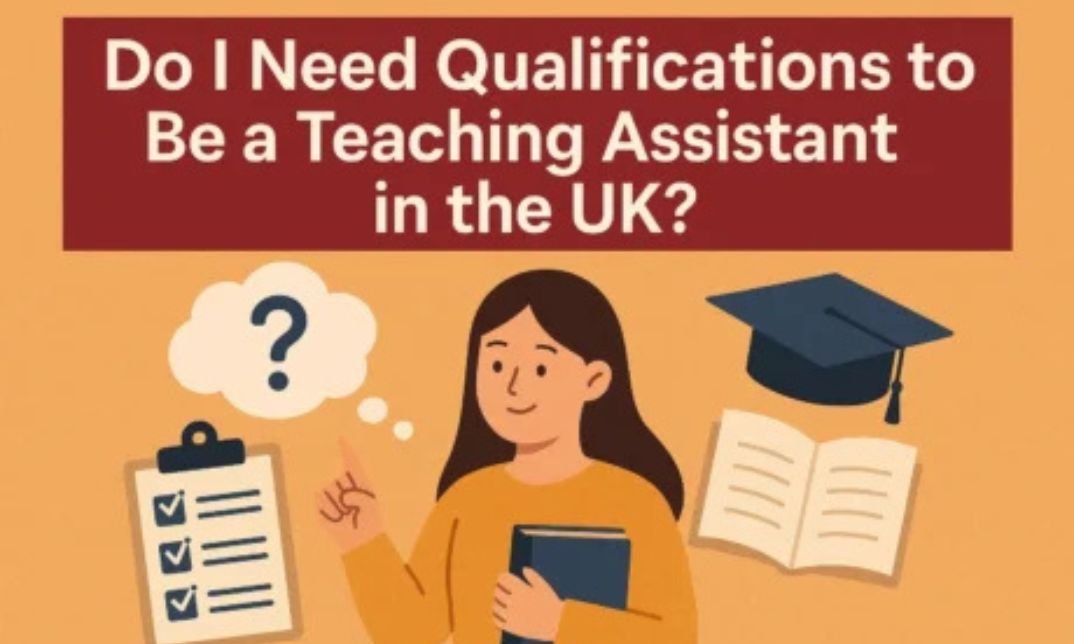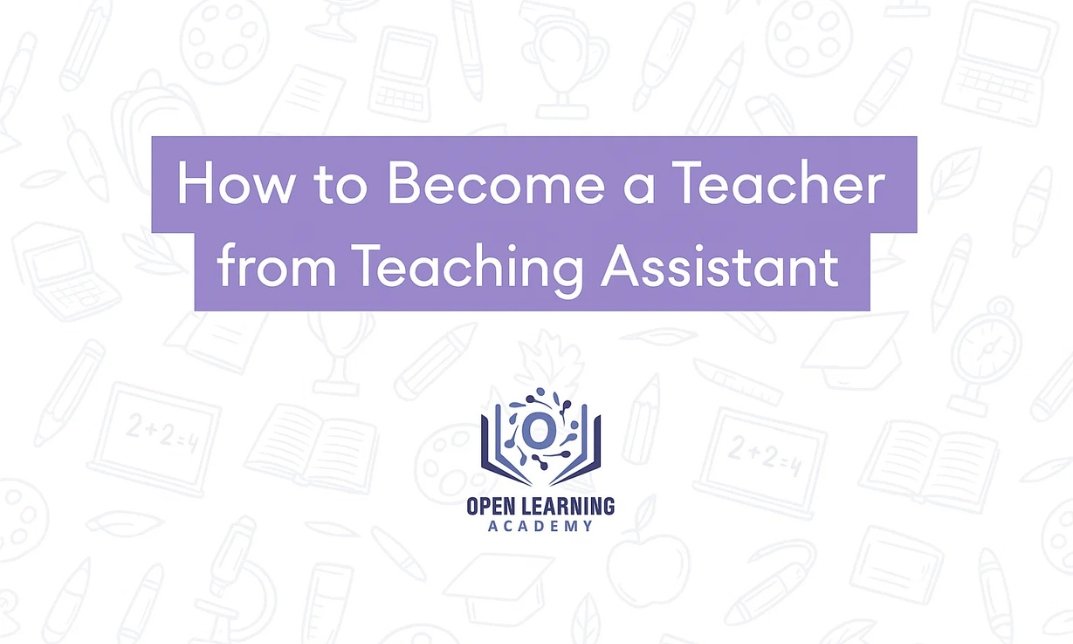No products in the cart.
If you’ve ever wondered what qualifications do I need to be a teaching assistant, you’re in the right place. Working as a TA is incredibly rewarding — you help children learn, grow, and feel supported every single day in the classroom.
The great news is you don’t need a degree to get started. Most schools look for good English and maths skills, a caring attitude, and a genuine love for helping others. Start with a Level 2 Supporting Teaching and Learning course to build your foundation. Then progress to Level 3 or a Teaching Assistant apprenticeship to earn while you learn.
In this guide, we’ll walk you through everything step by step — from the basic requirements to the best courses and career progression routes. By the end, you’ll know exactly how to start your journey toward becoming a confident, qualified teaching assistant.
What Qualifications Do I Need to Be a Teaching Assistant in the UK?
Before you start applying for classroom roles, it helps to know what you need to be a teaching assistant. Most schools look for a few simple essentials rather than long lists of qualifications.
You’ll usually need GCSEs in English and maths (grades 9–4/C or equivalent) to show you can support pupils in literacy and numeracy. You’ll need an enhanced DBS check with the children’s barred list. Strong IT skills, clear communication, and good references from employers or volunteers are also essential.
These are the core requirements to be a teaching assistant. Once you have them, start gaining experience through placements, CPD courses, or a recognised TA qualification.
What Are the Best Entry-Level TA Courses?
If you’re starting your career as a teaching assistant, a Level 2 Supporting Teaching and Learning (STL) course is the best place to begin. It gives you the key skills to support teachers and pupils effectively.
- Start with Level 2 Supporting Teaching and Learning – the main entry route for new TAs.
- Level 2 Award – theory-based; helps you understand classroom roles and responsibilities.
- Level 2 Certificate – includes school experience; perfect if you can arrange a placement.
- Choose Ofqual-regulated providers such as NCFE, CACHE, or City & Guilds – trusted and widely recognised by schools.
- Build strong foundations – develop your confidence, communication, and practical classroom skills.
Completing a Level 2 teaching assistant course is a great first step toward a stable, rewarding role in education — and it prepares you to move on to Level 3 qualifications later.
What Is the Next Step Up After Level 2?

After completing your Level 2 qualification, the next stage is to move on to the Level 3 Teaching Assistant course. This qualification builds on your existing knowledge and prepares you for greater classroom responsibility. You’ll learn how to plan interventions, support pupils with additional needs, and work more closely with teachers to improve learning outcomes.
You can study the Level 3 Supporting Teaching and Learning Certificate or Diploma, or choose the Level 3 Teaching Assistant apprenticeship, which allows you to earn while you learn in a school setting. Both routes are recognised by employers and can lead to higher pay grades and more independent roles.
Completing a Level 3 teaching assistant qualification shows you’re ready to take initiative, manage small groups, and contribute more fully to the teaching process — a strong step toward becoming an experienced and valued member of the classroom team.
What If I Want to Work with SEN Pupils?
If you’re passionate about supporting children with additional needs, extra SEN teaching assistant training can help you feel confident and capable in the classroom. These short, practical CPD courses are designed to help you make a real impact where it matters most.
Start with SEN support and autism or ADHD awareness, then build on that with behaviour management and communication training such as PECS or Makaton. Many schools also value phonics and Paediatric First Aid (EYFS) — they show you’re ready to support a wide range of learners safely and effectively.
And if you’re wondering what kind of salary SEN and experienced TAs can expect, you’ll find a full breakdown in this helpful guide –
SEN Pay Guide: How Much Salary for Teaching Assistant from Open Learning Academy— it explains pay bands, progression routes, and how training can boost your earning potential.
Do You Need Classroom Experience or a Placement?
If you’re taking a Certificate or Diploma route, you’ll usually need some classroom experience to show you can put your learning into practice. Most schools expect a few in-school hours, which can be done through a placement, volunteering, or paid support role.
Don’t worry if you’re starting with no experience — many schools are happy to take on motivated learners who are completing their training. You can contact local schools or multi-academy trusts (MATs) to ask about volunteering opportunities while you arrange your DBS check.
This hands-on experience is one of the best ways to understand daily classroom routines, build confidence, and show future employers that you’re serious about becoming a teaching assistant.
Can I Train Online to Be a Teaching Assistant?
Yes — absolutely. Many Level 2 and Level 3 teaching assistant courses online let you study at your own pace with full tutor support. Online learning is a great option if you’re balancing work, family, or other commitments while training.
Just make sure your teaching assistant qualification online is Ofqual-regulated, so it’s officially recognised by schools. Some courses include in-school evidence or observation, which you can usually complete through a placement or workplace supervisor.
If you’d like to build confidence before enrolling, explore CPD modules in safeguarding, SEN support, and behaviour management — short, flexible courses that strengthen your CV. For trusted, fully supported online learning, check out Open Learning Academy — their flexible TA courses combine expert guidance, accredited qualifications, and real classroom value.
What Is a Higher Level Teaching Assistant (HLTA)?
A Higher Level Teaching Assistant (HLTA) is an experienced TA who has met national standards and taken on additional classroom responsibilities. HLTAs play a vital role in learning support and often step in to lead groups or cover classes when teachers need extra help.
Typical HLTA Duties Include:
- Leading small-group or whole-class lessons under a teacher’s direction.
- Supporting lesson planning and preparing learning materials.
- Helping to assess and track pupil progress.
- Providing targeted support for pupils with SEN or additional needs.
- Covering classes when teachers are absent or in meetings.
- Modelling good behaviour and routines for pupils.
You’ll need a Level 3 qualification, solid classroom experience, and proof that you can work independently to support learning. Many schools encourage staff to complete Level 4 HLTA training to progress further.
They’re graded and paid higher than standard TA roles — the perfect next step if you’re ready for more responsibility and recognition.
Which Awarding Bodies Offer Recognised TA Courses?
When choosing a teaching assistant course, always check that it’s awarded by an Ofqual-regulated body. This ensures your qualification is officially recognised by schools and local authorities across the UK.
The most trusted awarding bodies include NCFE CACHE, City & Guilds, and Open Awards — all known for high-quality, nationally recognised teaching assistant qualifications. Each course will have a unique qualification code listed on the provider’s page, so it’s worth double-checking before you enrol.
At Open Learning Academy, TA courses are accredited by Open Awards, an Ofqual-regulated organisation respected by schools and employers. That means your qualification carries real value, helping you progress confidently from classroom support to advanced roles.
Final Thoughts: What qualifications do i need to be a teaching assistant?
Becoming a teaching assistant is all about choosing the path that works best for you. Start with Level 2, move to Level 3, or aim for HLTA — each step builds your skills, confidence, and impact.
Focus on the basics — get your English and maths, complete a TA course, and gain real classroom experience. From there, keep developing through short CPD modules and SEN-focused training to stay confident and current.
If you’re ready to take that next step, explore the Teaching Assistant Course at Open Learning Academy. It’s flexible, affordable, and fully accredited through Open Awards, giving you trusted qualifications, expert tutor support, and everything you need to start a rewarding classroom career with confidence.
FAQs
Can I work as a teaching assistant with no qualifications?
Yes, some schools hire unqualified TAs for support roles, but completing a Level 2 or 3 TA course will improve your skills, confidence, and job prospects.
How much does a TA get paid?
Most TAs earn between £18,000 and £25,000 per year. Experienced or higher-level teaching assistants (HLTAs) can earn up to £28,000+, depending on the school and region.
How long does it take to train to be a teaching assistant?
It usually takes 3–9 months for a Level 2 or 3 qualification. Apprenticeships take longer — around 12–18 months — since you study while working in a school.
How much is a TA qualification?
Online TA courses start at around £200–£600, while Level 2 and Level 3 college diplomas cost £700–£1,500+. Some learners qualify for funding or Advanced Learner Loans.
Can I do a teaching assistant course for free?
Yes, depending on your age, income, or location, some colleges and online providers offer free or funded TA courses through government schemes.
Why are schools getting rid of TAs?
Some schools have reduced TA numbers due to budget cuts, but many still rely heavily on skilled assistants for SEN support and classroom stability.
Why do teaching assistants earn so little?
TA pay reflects term-time hours and local authority funding. However, qualifications, experience, and SEN specialisms can help increase your salary over time.
What is the 70/30 rule in teaching?
It means pupils should be active in learning for 70% of the lesson, with teachers and TAs guiding for 30% — promoting independence and engagement.
How to become a teaching assistant?
Get your GCSEs in English and maths, complete a Level 2 or 3 TA qualification, gain classroom experience, and apply for school or apprenticeship roles.




